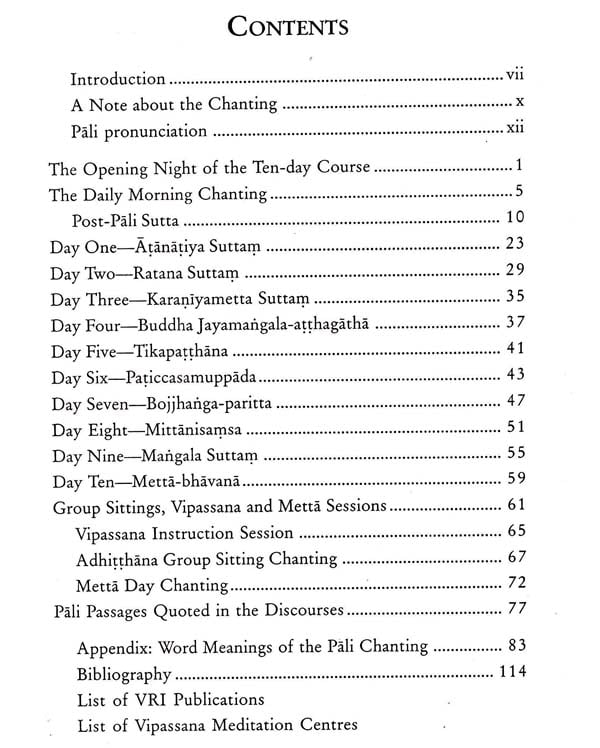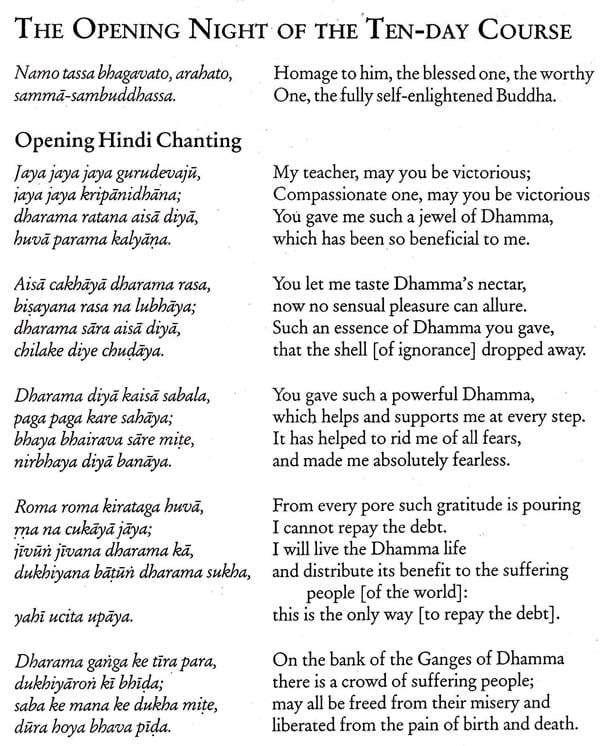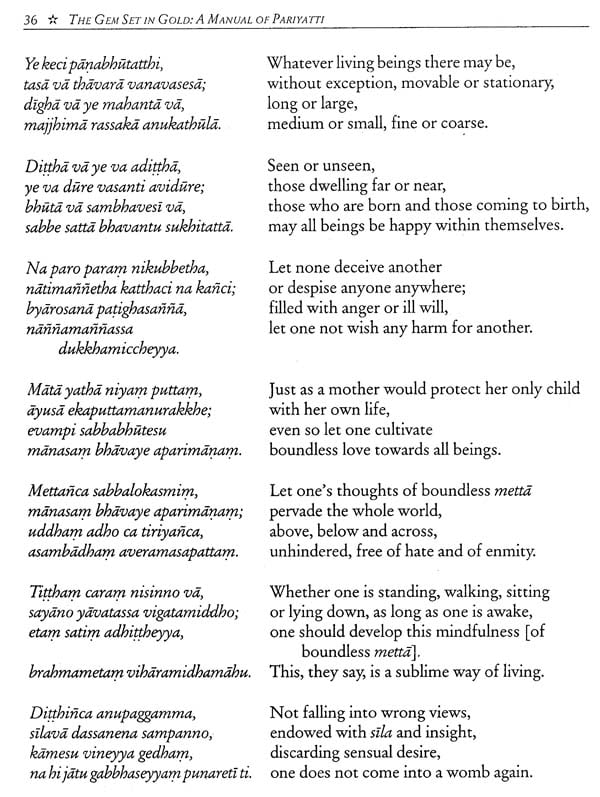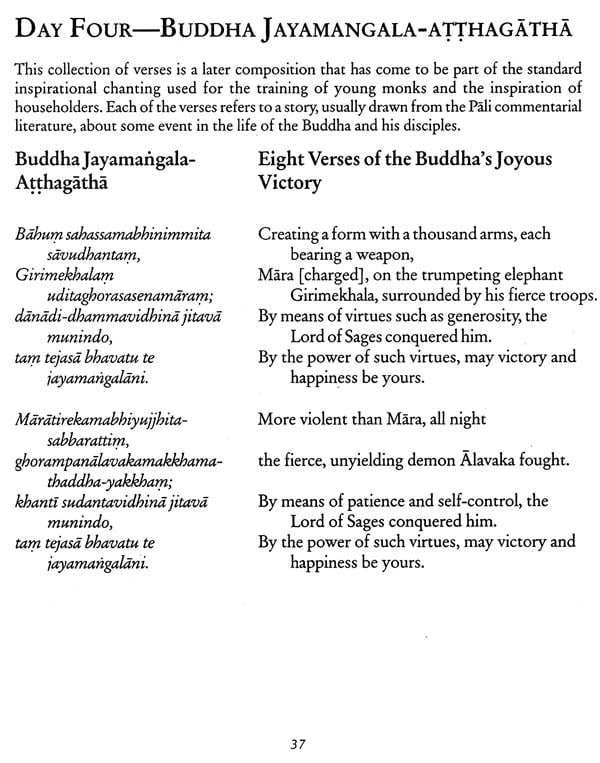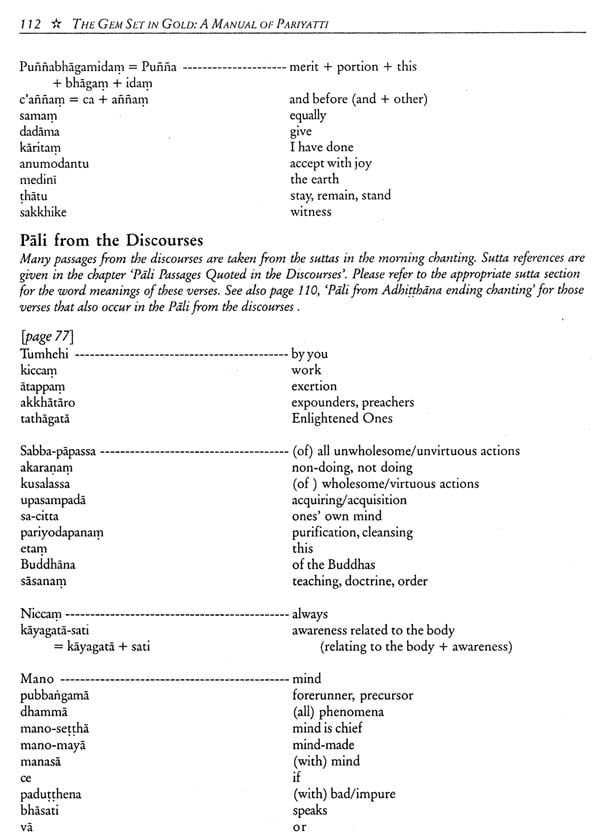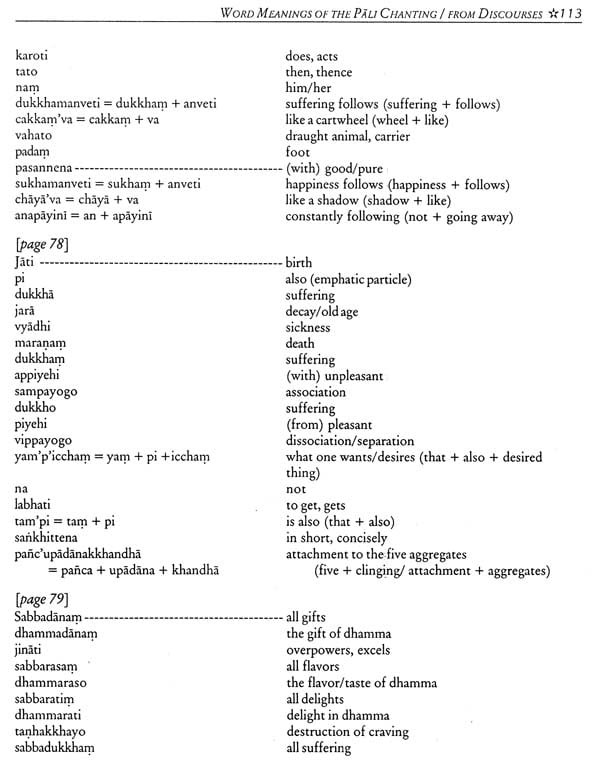
The Gem Set In Gold (A Manual of Pariyatti Containing the Pali and Hindi Chanting from a Ten-Day Course of Vipassana Meditation)
Book Specification
| Item Code: | NAW272 |
| Author: | S.N Goenka |
| Publisher: | Vipassana Research Institute |
| Language: | English |
| Edition: | 2014 |
| ISBN: | 8174142657 |
| Pages: | 124 |
| Cover: | PAPERBACK |
| Other Details | 9.50 X 7.00 inch |
| Weight | 270 gm |
Book Description
Shri Satyanarayanji Goenka was born in Mandalay, Myanmar in 1924. Although he topped the list of all successful candidates in the whole of Myanmar in the tenth class, he could not continue his studies further. At a very early age he set up many commercial and industrial institutions and earned fabulous wealth. He also established many social and cultural centres. Because of tension he became a victim of migraine, which could not be cured by doctors of Myanmar and of other countries in the world. Then someone suggested him to take a course of Vipassana. Vipassana has done well not only to him but it has also been benefiting many others. He learned Vipassana from Sayagyi U Ba Khin in 1955. Sitting at the feet of his teacher he practiced it for fourteen years He also studied the words of the Buddha during this period. He came to India in 1969 and conducted the first vipassana course in Mumbai. After that a series of courses were held. In 1976 the first residential course of vipassana was held in Igatpuri and the first centre of vipassana was established here. Up till now 170 centres have been established all over the world. New centres also are coming up. At these centres 1500 trained teachers teach vipassana in 55 languages of the world. Not only ten- day courses are conducted at these centres but also at some centres 20-day, 3o-day, 45-day and 6o-day courses are conducted. All courses are free of charge. The expenses on food and accommodation etc are met by the self-willed Dana given by those who benefited from the course. Seeing its benevolent nature vipassana courses is held not only for the inmates of jails and school children in the world but also for police personnels, judges, government officers etc.
This jewel, the sublime practical teaching of the Buddha, has now been given to people throughout the world. Carefully preserved for centuries in the small country of Myanmar, it has, under Goenkaji's compassionate and energetic guidance, returned to India, its source, and from there has spread to the rest of the world. Tens of thousands of people from a vast spectrum of cultures, religions and nationalities, have started walking on this ancient path, to free themselves from the bondage of suffering.
The treasure which Goenkaji has been distributing is Vipassana, the quintessence of the Buddha's teaching. As he imparts the jewel of the practice, using his own words, in languages current in today's world, he also encourages the study of the original teaching of the Buddha in his own language: Pali. In Pali these two complementary aspects of Dhamma are known as patipatti and pariyatti. Goenkaji refers to these as, "a gem, the beauty of which is enhanced by its golden setting."
As a teacher, Goenkaji has always given primary importance to patipatti, the practical aspect, because it is only the experience of truth through systematic self-introspection that can purify the mind and relieve suffering. This is the gem of the Dhamma. Hand in hand with the practice of meditation, however, is the theoretical foundation, like the protective golden setting for a valuable gem. The firm foundation of pariyatti provides the necessary guidance and inspiration for practitioners to take, and keep taking, proper steps on the Path.
Fortunately for our generation and those that follow, S. N. Goenka is a master of both pariyatti and patipatti. Indeed, when he came to India in 1969, he brought both aspects of the Dhamma with him-not only his unique capacity to teach meditation, but also literally hundreds of texts of the Tipitaka, the Buddhist Pali scriptures, in Burmese script.
The decades since have seen the ripening of these two aspects. Thousands of seekers have come to ten-day Vipassana courses in various parts of the world to experience first-hand the transformative effects of Dhamma-to put the Buddha's words into practice, and start to emerge from suffering. And through the publications of the Vipassana Research Institute (founded in 1985) meditators have been able to study the Buddha's words and practice at a much deeper level.
Goenkaji's rare ability to explain the Buddha's teaching is deeply enhanced by his proficiency in several languages, including Pali. Pali is the language in which the Buddha taught, and in which his teachings have been preserved. As with Sanskrit and Latin, it is not a contemporary spoken language, but a so-called "dead language"- a medium, nevertheless, conveying and illuminating a living tradition.
Pali is unique in many ways. One of the meanings of the word Pali is "that which protects, or preserves." Pali exists to preserve the words of the enlightened person, Gotama Buddha. The tradition is that, by expressing the sublime teaching which allows beings to be liberated from the rounds of suffering, Pali protects the people; it preserves the invaluable treasure of the Buddha's own words.
Adherence to the use of the Buddha's language has been a profoundly significant part of the living tradition handed down in the Theravada Buddhist countries, which have preserved Pali in its oldest form. Faithfulness to the Pali words of the Buddha has therefore been a central part of the teaching of S. N. Goenka, and the lineage which he represents.
Students at Vipassana courses practice meditation in a special environment-one where the highest merits of pariyatti and patipatti are conjoined. The meditators undertake the delicate and demanding task of examining their own minds in a surrounding which intermingles long stretches of silent introspection with periods of instruction, conveyed by Goenkaji's recorded words in Hindi or English. Students of these courses are familiar with Goenkaji's use of Pali in the daily discourses (in which he explains the theory of the meditation technique), as well as in his practice of chanting both the Buddha's words and his own inspiring compositions, rhymed Hindi couplets known as dohas.
**Contents and Sample Pages**
